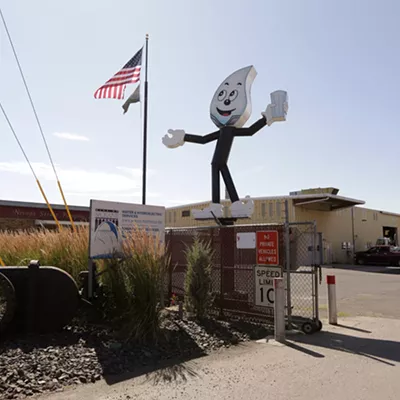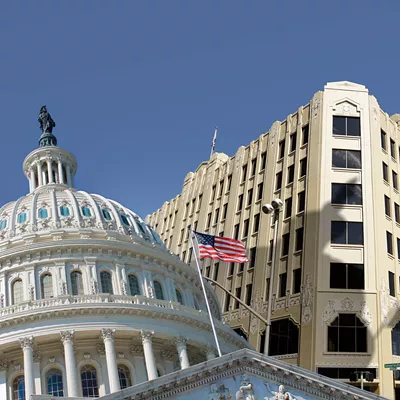Even now that she’s principal, Lori Wyborney hears that disdainful phrase: You work at Rogers?
“I think people have this idea of what a school of low socio-economics is,” Wyborney says. It’s violent, tough, rife with gangs. Being ranked in the state’s lowest 5 percent of schools and having a graduation rate of about 50 percent hasn’t helped.
But over the past decade, Rogers’ leaders have attempted to transform it into a new school, beginning with a multimillion-dollar renovation that modernized the school’s historic, art deco building.
Now, the school has earned a $3.7 million grant from the federal government, giving it an opportunity to renovate its academics as well. It’s a chance to keep the school’s rebirth going, to improve the education it provides and, maybe more importantly, to burnish its own — as well as Hillyard’s — reputation.
To understand Rogers, first you have to understand Hillyard.
“There’s a ton of pride around being from Hillyard,” says former principal Carole Meyer. The wrestling team, for example, once brandished “Tougher than a dogfight in Hillyard” T-shirts.
But Meyer also worried that some students felt pressured to live up to the rougher, more negative stereotypes.
Which can be a hard to escape, considering that — in the poorest zip code in the state — more than 73 percent of Rogers students qualify for free and reduced lunch.
As principal, she vowed to change the way Rogers was viewed — and viewed itself — by upping the standards for its students.
“We wanted to write our own script, and flip the script on what people were thinking about us,” she says.
Rogers amped up its academic standards, focusing on college readiness and advanced placement courses. When Meyers left Rogers in 2010, 20 times more students were taking PSAT tests, and six times more AP tests were being taken than when she started.
But behavior was still problematic. When Brent Osborn became assistant principal in 2008, about 100 students would loiter outside the building, skipping school. Cheering, gawking students surrounded big schoolyard fights.
But Osborn cracked down. Last year, Rogers issued 1,458 short-term suspensions. He suspended students for fighting, and for watching fights. The result of his crackdown, he says, is increased GPAs.
“We have eliminated most defiance in school,” Wyborney says. Staff meets with families of students who skip class. They hold “restorative conferences” to repair relationships between teachers and suspended students.
“Right now, we’re reaping the benefits of the best attendance the school has ever had,” Osborn says.
"In three years, can you dramatically shift a building’s academic performance?” That, assistant principal Jay Jordan says, was the question asked by the federal School Improvement Grant, as the school went through the intensive six-week process to receive the grant.
The grant called for an additional half-hour of school time and bonus pay for successful teachers. With such changes, Jordan needed approval from the staff, the district and the unions.
The result: Rogers gets $1.5 million next year, $1.3 million in 2013, and $900,000 in 2014.
The money buys Rogers a slew of innovations. For starters: A new after-school program will help failing students get extra time to catch up — and buses will run later for those students. New employees will be hired both to connect students-in-need with social services and to partner with families of struggling students. Rogers will hire a math coordinator to work with Rogers’ feeder schools. The LINK program — transitioning kids from middle school to high school — gets a new infusion of funds.
The grant will pay for all students to take the Measure of Academic Progress test every year, currently available only to freshmen.
It’s all in service of two big, very measurable goals: to improve graduation rates and standardized test scores.
“The grant is meant to be as a booster shot to get some things started,” Jordan says. “For us to see what works best.”
New graduation numbers released last week show that, even before the grant, Rogers’ on-time graduation rates have risen from about 50 percent in 2009 to 60 percent in 2010.
But over the next three years, goals are higher: 66 percent in 2012, 77 percent in 2013, and all the way to 85 percent in 2014. Rogers’ administrators think that’s doable — even essential.
“Hillyard’s a very tight-knit community, a very proud community,” Osborn says. “And the high school is the face of the community. It means the stakes are high.”


























